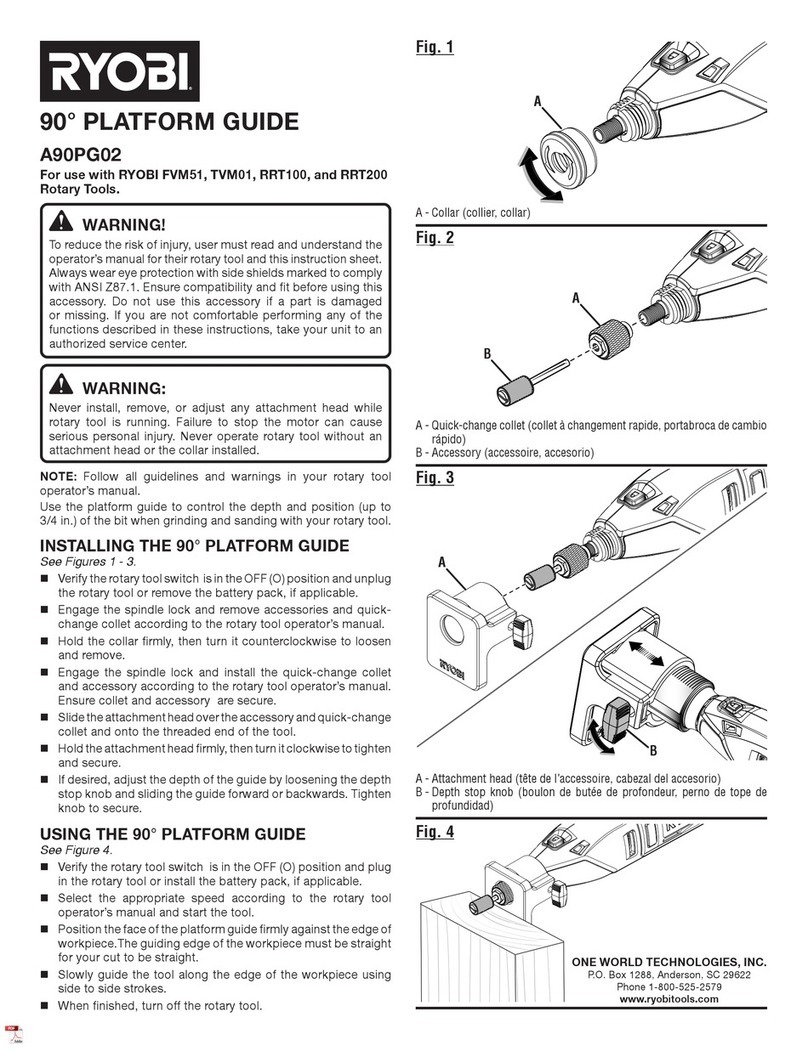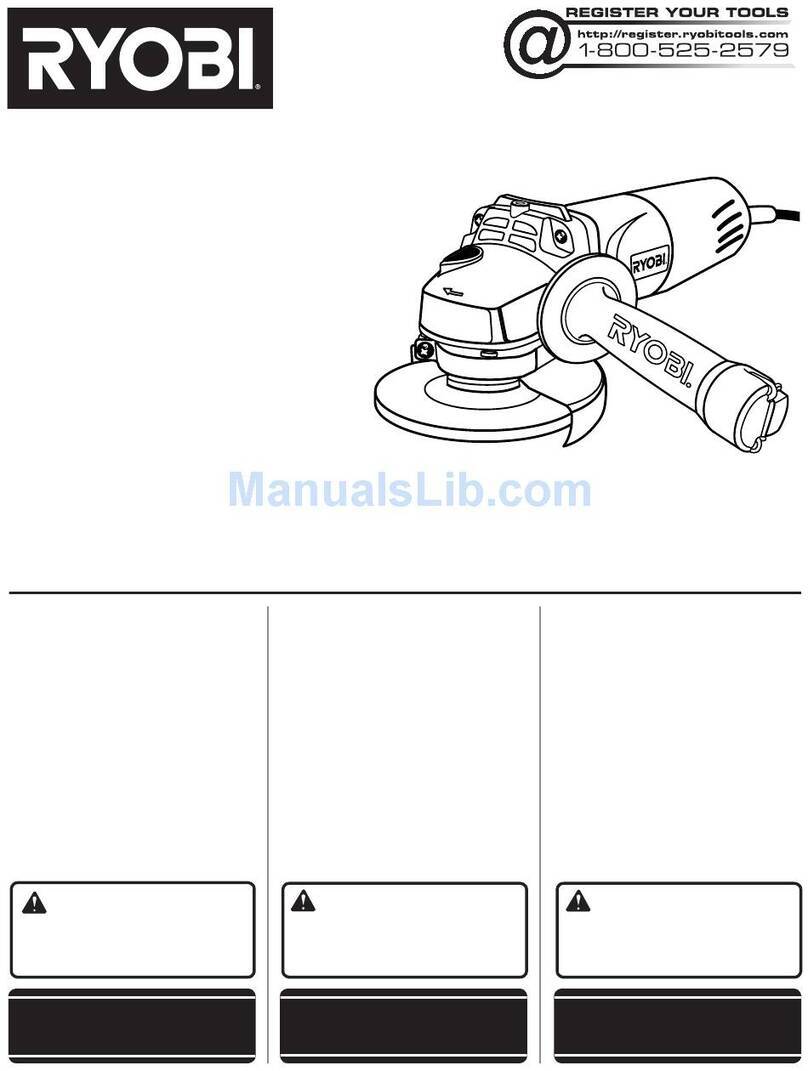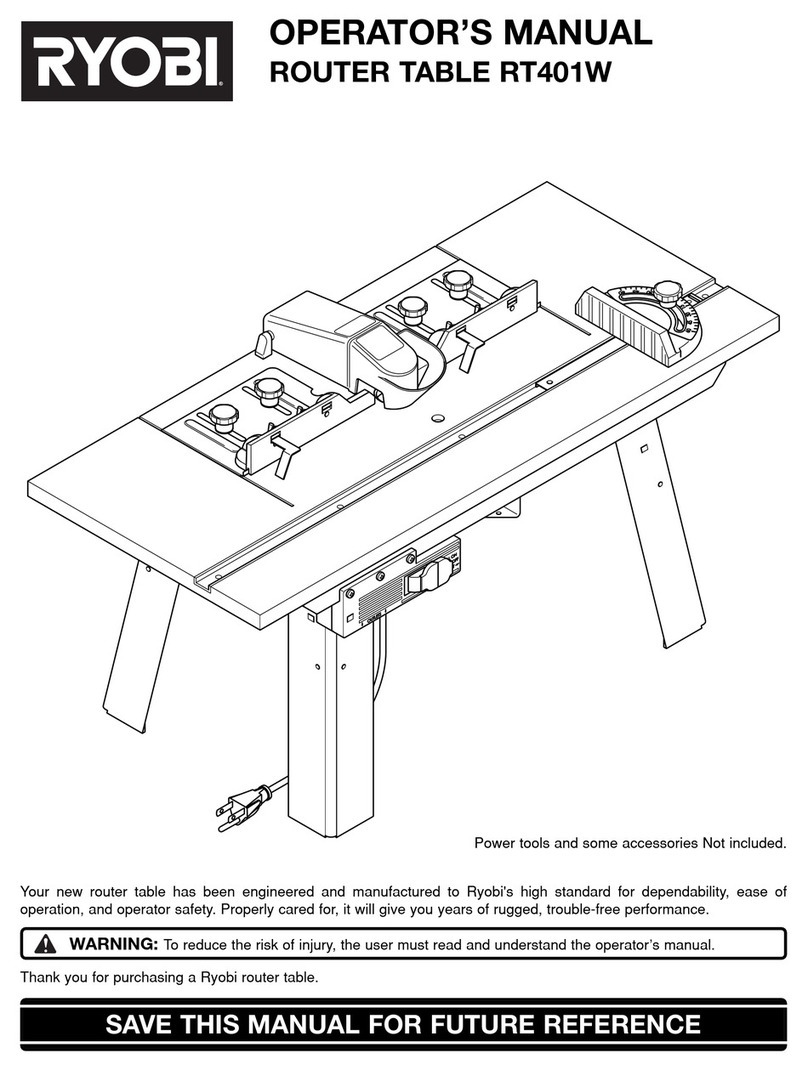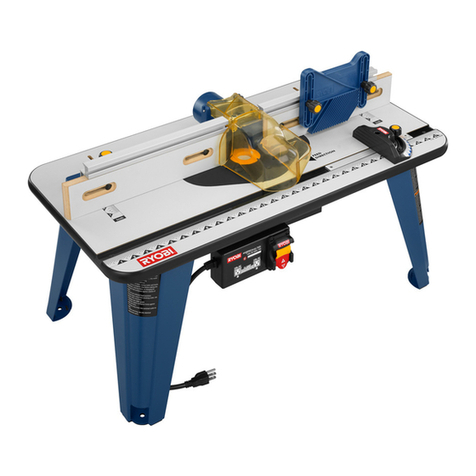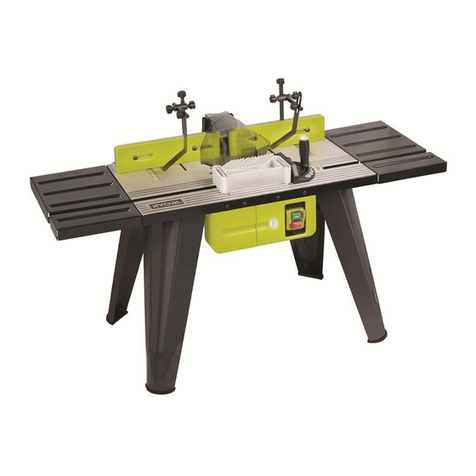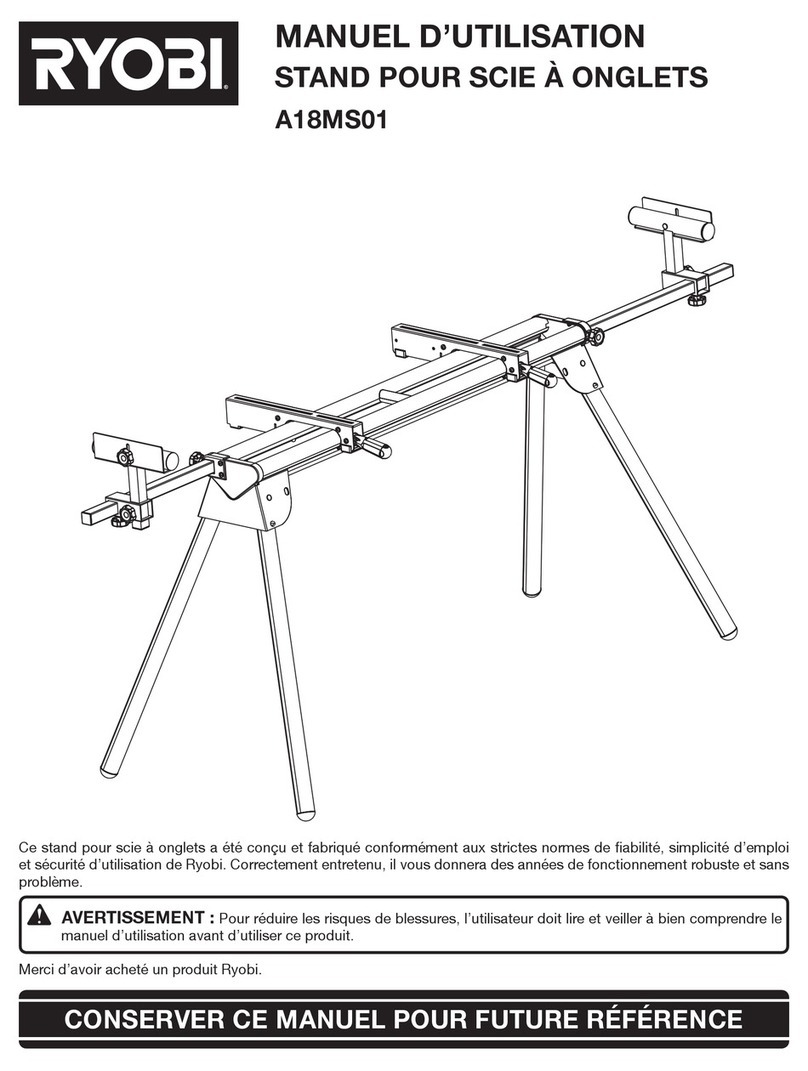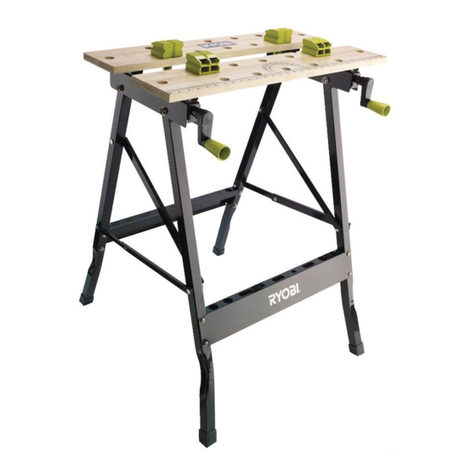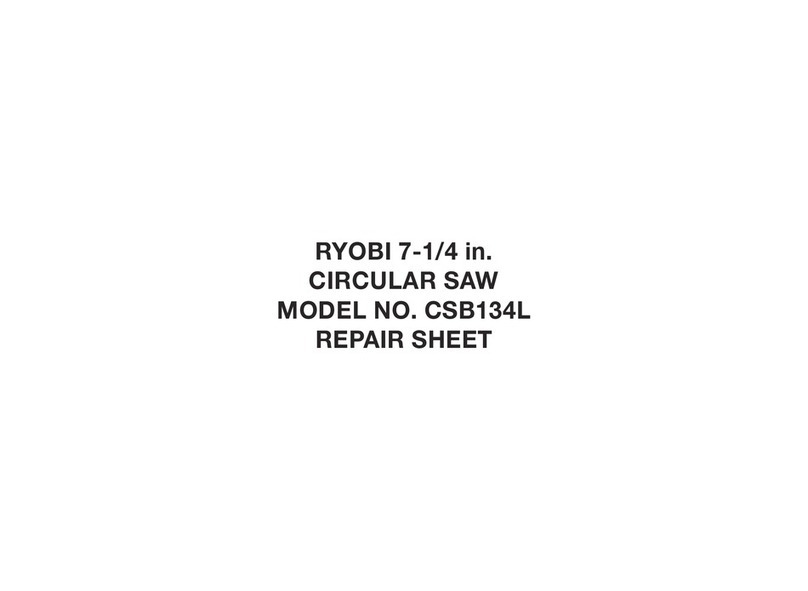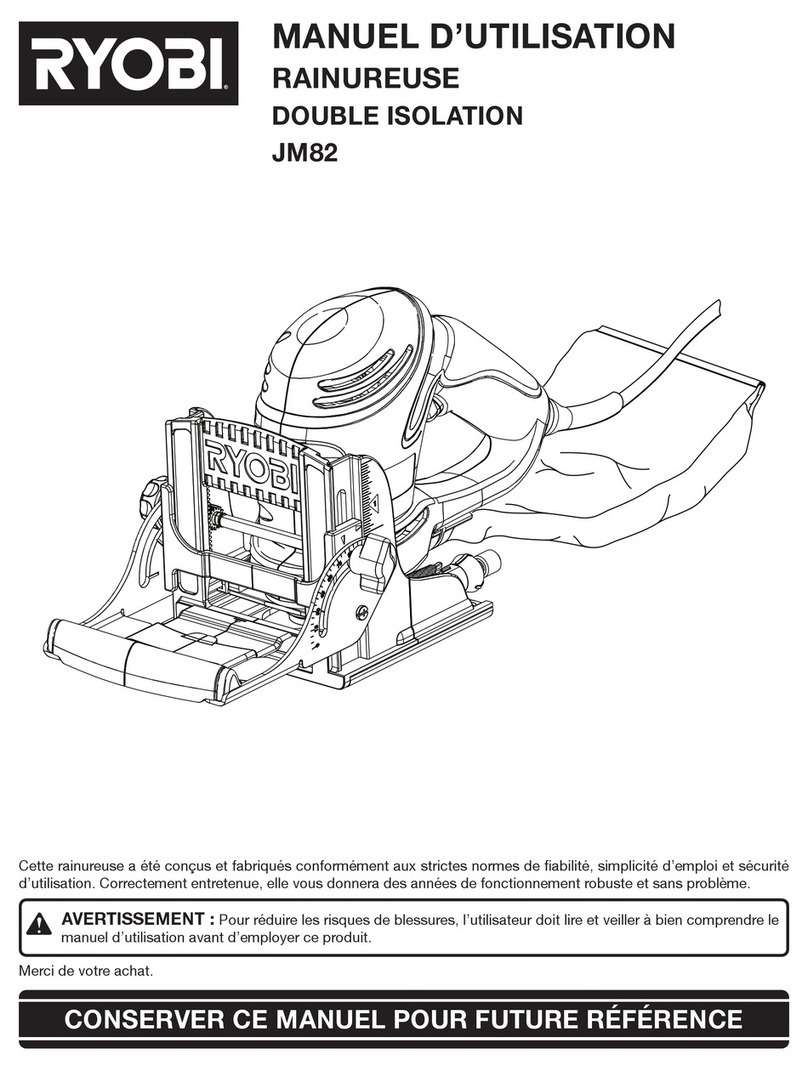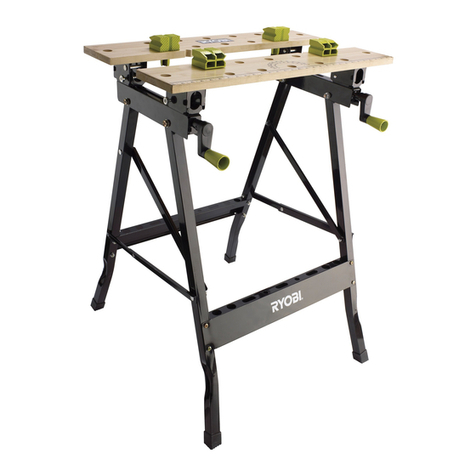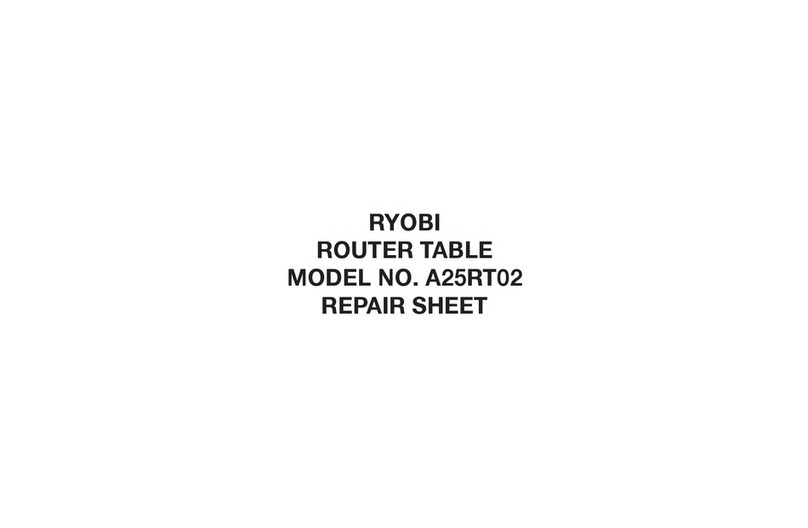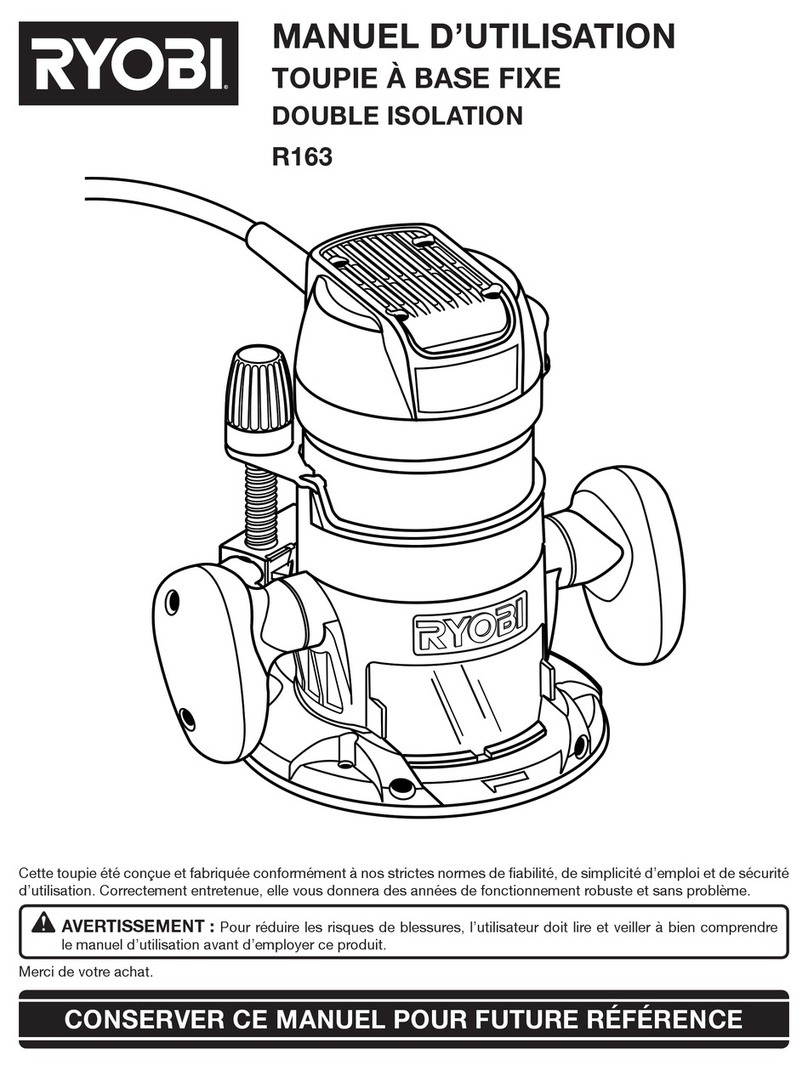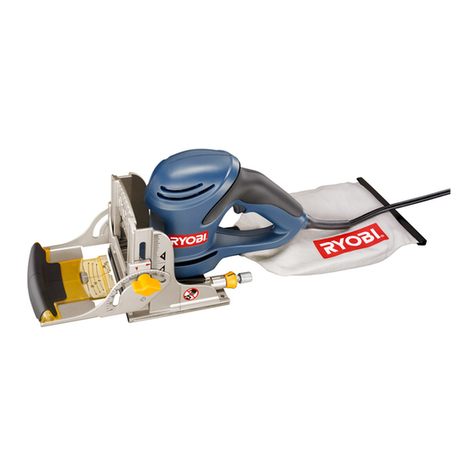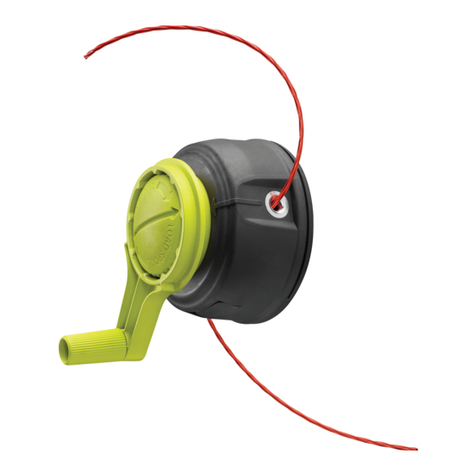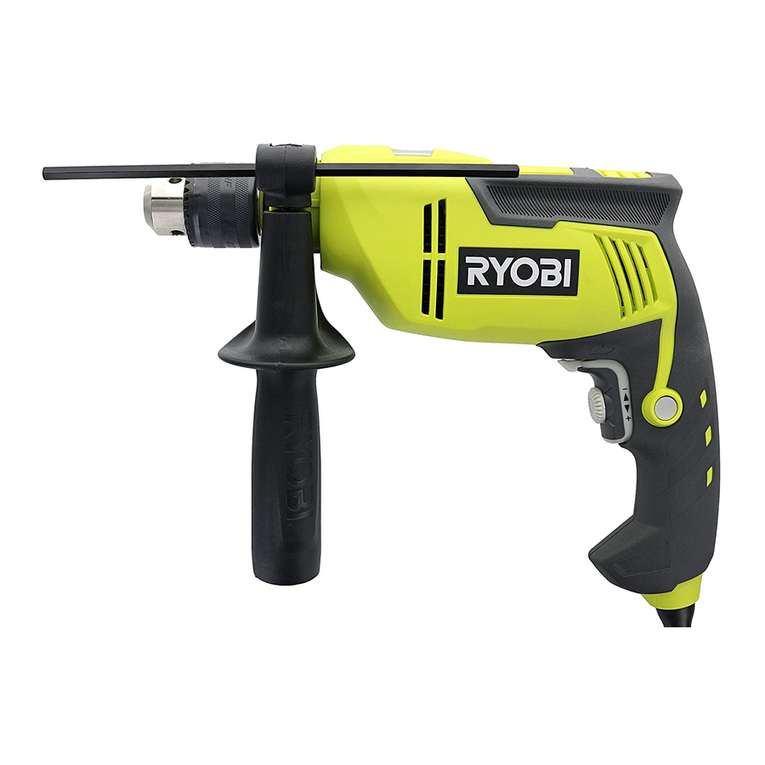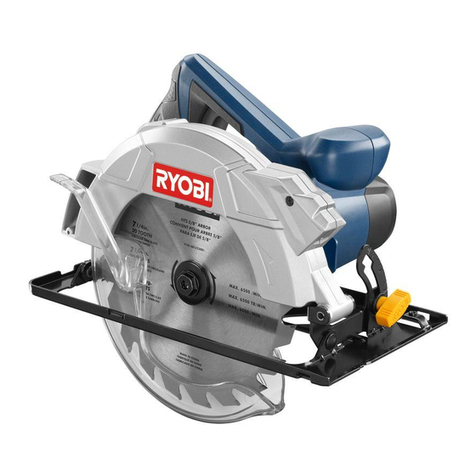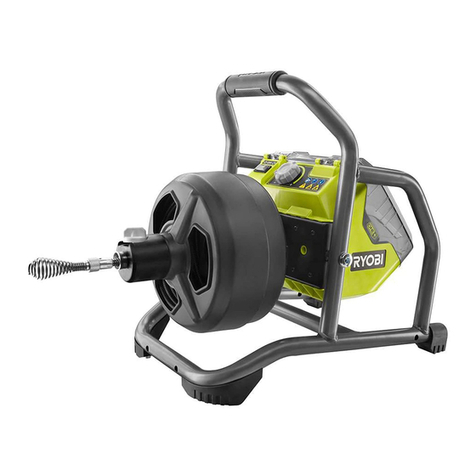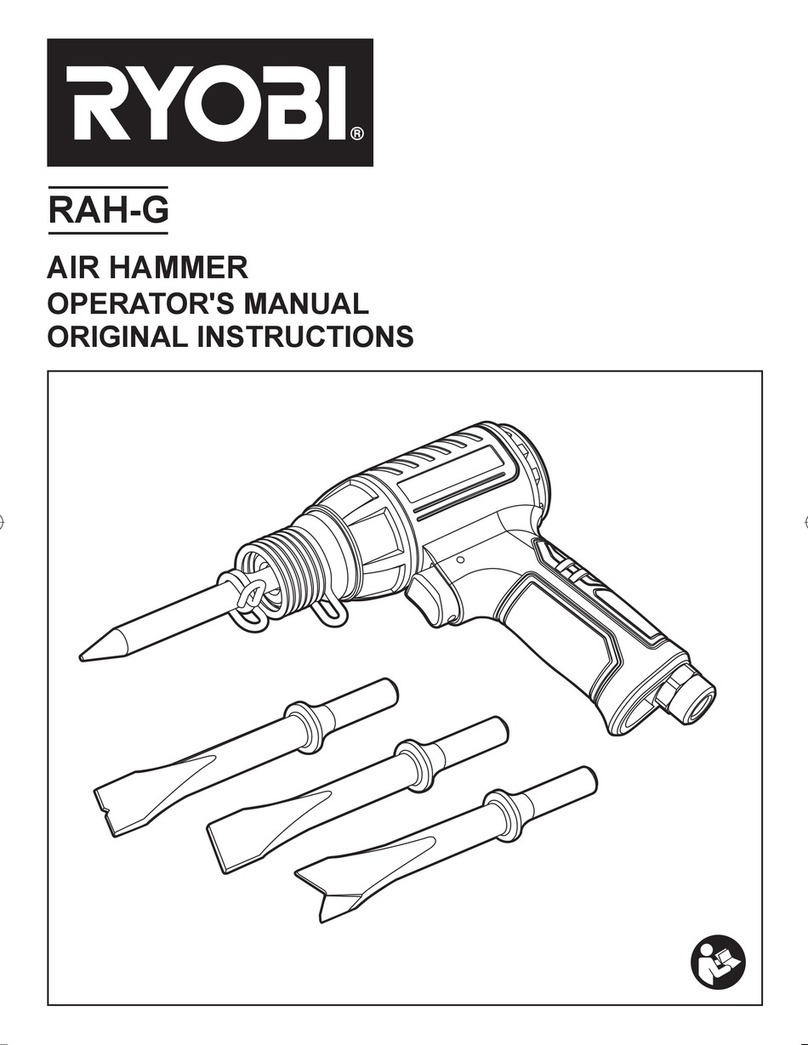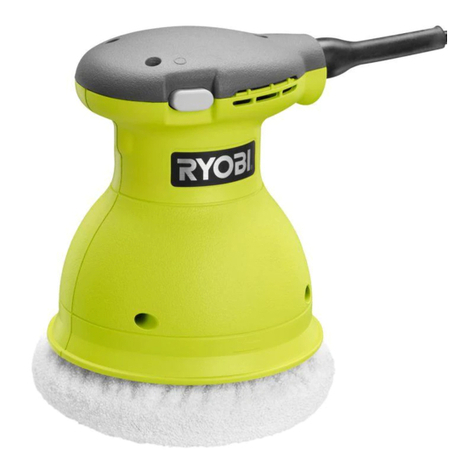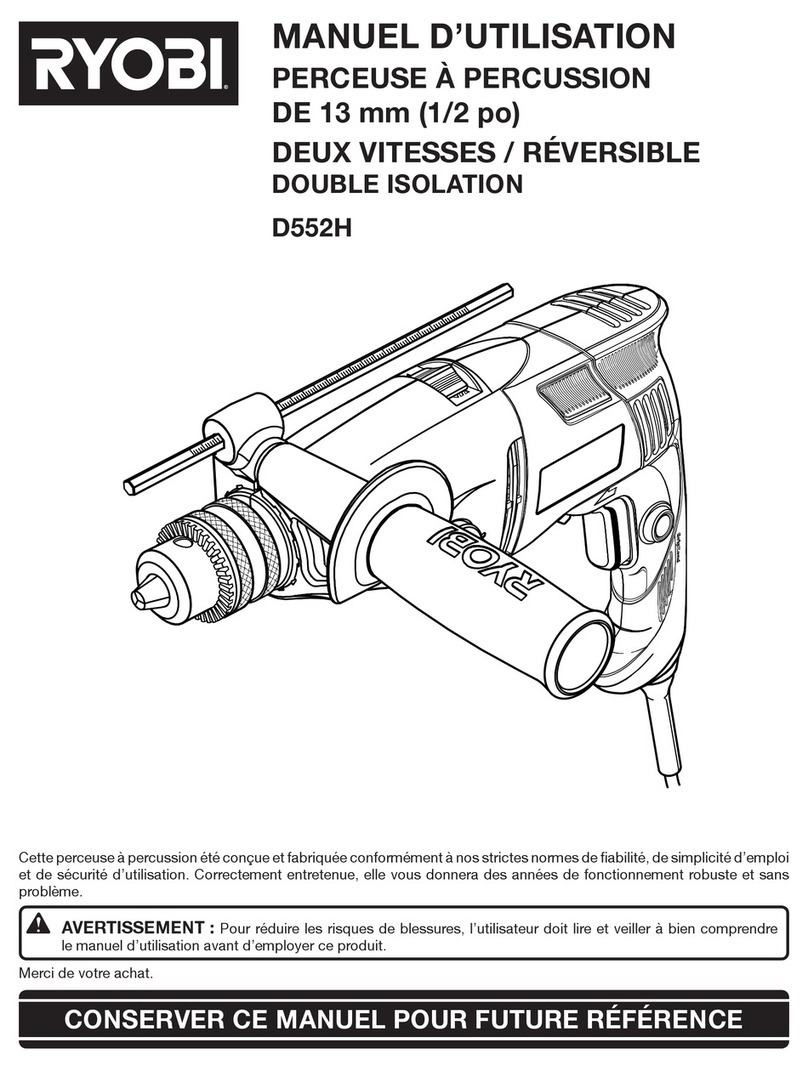1
English
GB
FR DE ES IT NL PT DK SE FI NO RU PL CZ HU RO LV LT EE HR SI SK GR TR
SPECIAL SAFETY RULES
Hold tool by insulated gripping surfaces when
performing an operation where the cutting tool
may contact hidden wiring or its cord. Contact with
a “live” wire will also make exposed metal parts of the
power tool “live” and shock the operator.
Inspect for and remove all nails from lumber
before using this tool. Following this rule will reduce
the risk of serious personal injury.
Do not reach in the area of the spinning bit. The
proximity of the spinning bit to your hand may not
always be obvious.
This product is not intended for use as a dental drill
or in human or veterinary medical applications.
Serious injury may result.
When using steel screws, cut-off wheels, high
speed cutters, or tungsten carbide cutters, always
have the work securely clamped. Never attempt to
hold the work with one hand while using any of
these accessories.
ADDITIONAL SAFETY INSTRUCTIONS FOR
YOUR MINI GRINDER
This power tool is intended to function as a
grinder. Read all safety warnings, instructions,
illustrations and specifications provided with this
power tool. Failure to follow all instructions listed
below may result in electric shock, fire and/or serious
injury.
Do not use accessories which are not specifically
designed and recommended by the tool
manufacturer. Just because the accessory can be
attached to your power tool, it does not assure safe
operation.
The rated speed of the accessory must be at least
equal to the maximum speed marked on the power
tool. Accessories running faster than their rated speed
can break and fly apart.
The outside diameter and the thickness of your
accessory must be within the capacity rating of
your power tool. Incorrectly sized accessories cannot
be adequately guarded or controlled.
The arbour size of wheels, flanges, backing pads
or any other accessory must properly fit the
spindle of the power tool. Accessories with arbour
holes that do not match the mounting hardware of the
power tool will run out of balance, vibrate excessively
and may cause loss of control.
Do not use a damaged accessory. Before each use
inspect the accessory such as abrasive wheels for
chips and cracks, backing pad for cracks, tear or
excess wear, wire brush for loose or cracked wires.
If power tool or accessory is dropped, inspect for
damage or install an undamaged accessory. After
inspecting and installing an accessory, position
yourself and bystanders away from the plane of
the rotating accessory and run the power tool at
maximum no-load speed for one minute. Damaged
accessories will normally break apart during this test
time.
Wear personal protective equipment. Depending
on application, use face shield, safety goggles
or safety glasses. As appropriate, wear dust
mask, hearing protectors, gloves and workshop
apron capable of stopping small abrasive or
workpiece fragments. The eye protection must
be capable of stopping flying debris generated by
various operations. The dust mask or respirator must
be capable of filtrating particles generated by your
operation. Prolonged exposure to high intensity noise
may cause hearing loss.
Keep bystanders a safe distance away from work
area. Anyone entering the work area must wear
personal protective equipment. Fragments of
workpiece or of a broken accessory may fly away and
cause injury beyond immediate area of operation.
Hold power tool by insulated gripping surfaces
only, when performing an operation where the
cutting accessory may contact hidden wiring or its
own cord. Cutting accessory contacting a “live” wire
may make exposed metal parts of the power tool “live”
and shock the operator.
Position the cord clear of the spinning accessory.
If you lose control, the cord may be cut or snagged
and your hand or arm may be pulled into the spinning
accessory.
Never lay the power tool down until the accessory
has come to a complete stop. The spinning
accessory may grab the surface and pull the power
tool out of your control.
Do not run the power tool while carrying it at your
side. Accidental contact with the spinning accessory
could snag your clothing, pulling the accessory into
your body.
Regularly clean the power tool’s air vents. The
motor’s fan will draw the dust inside the housing
and excessive accumulation of powdered metal may
cause electrical hazards.
Do not operate the power tool near flammable
materials. Sparks could ignite these materials.
Do not use accessories that require liquid
coolants. Using water or other liquid coolants may
result in electrocution or shock.
